Bell peppers come in many names. They are also called sweet peppers, capsicums, paprika when it’s a spice, or simply peppers. There’s a reason this colorful fruit is such a popular staple in many of our dishes. It’s flavorful, crunchy, and, depending on its color, can range from sweet to bitter.
But can guinea pigs eat yellow peppers?
Before introducing your pet to any new food, it’s good to be informed of its nutritional value, benefits, risks, and serving sizes. Whether you’re wondering if guinea pigs can eat apples or fresh fruits like these, always do your homework.
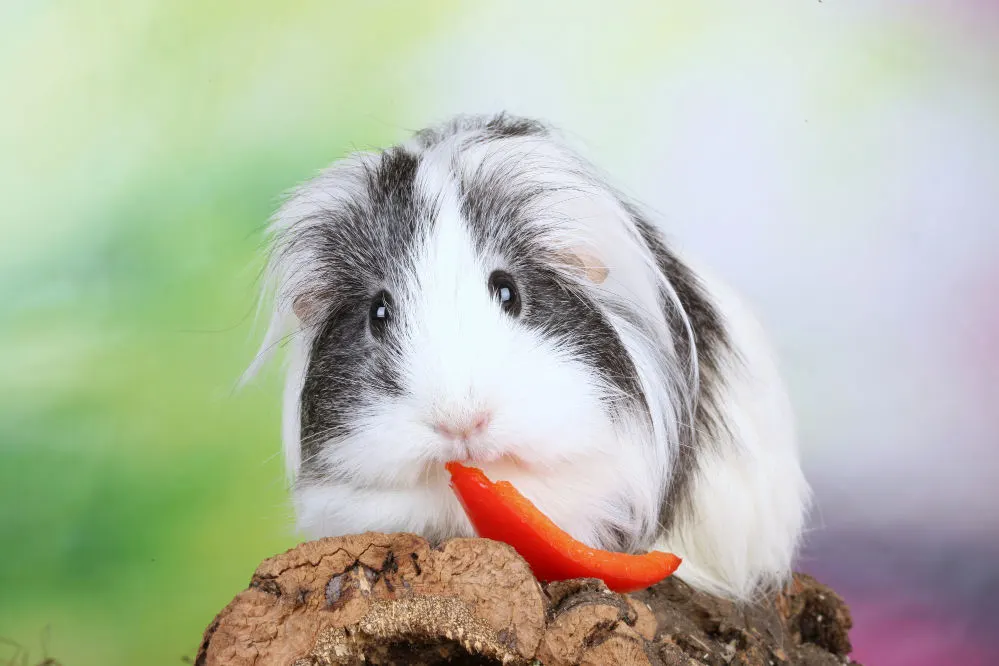
This guide will help you do just that. So, if you’re hoping to include more flavor in your guinea pig’s diet, keep reading to find out if your pet can enjoy a yellow pepper snack.
Are yellow bell peppers safe for guinea pigs?
Yes. Yellow bell peppers are safe for guinea pigs to eat. In fact, compared to red or orange bell peppers, yellow sweet bell peppers have a lower sugar content. This allows your furry friend to have this lovely crunchy snack in moderation a few times a week.
What are the health benefits of eating yellow bell peppers for guinea pigs?
Here are the top health benefits your pet can get from eating yellow peppers.
Eye Health
Yellow bell peppers contain so many vitamins essential for good eyesight and health. These include vitamins C, A, and beta-carotene, a pigment that gives fruits and veggies a red-orange color.
These vitamins help not only to prevent eye disease but also help decrease inflammation and helps eyes adjust between light and dark. This means even in low-light conditions, your pet can see well.
While this may not be as essential to your pet as it once was in the wild, it’s still important to keep their eye health in good shape for a better quality of life in the long run.
More Relaxed
Did you know that yellow equals mellow? Well, in this case, it does. Yellow peppers help promote better sleep in your pet and help with stress management because of an increase in melatonin and serotonin. This is all due to vitamin B6, which helps maintain a healthy nervous system.
Good Digestion
While guinea pig food and timothy hay add a good amount of fiber to your pet’s diet on a daily basis, fresh vegetables and fruit are essential too. The vitamin C in yellow peppers naturally helps their digestive system, promoting better gut health. This also means they can better absorb the nutrients in their food.
Yellow pepper essential nutrients for guinea pigs
As a pet owner, your guinea pig’s health should be the most important thing to you. So, here is a breakdown of yellow peppers’ nutritional value for your furry friend.
Vitamin C
Vitamin C is an essential supplement for guinea pigs to have. It aids in the healing of wounds, gum health and helps with the development and health of joints, skin, and mucosal surfaces.
But, like humans, cavies can’t produce their own vitamin C. So, they have to get their daily doses through their foods. Thankfully, yellow peppers contain lots of vitamin C, which can keep your pet in tip-top shape.
Typically, a guinea pig needs about a tablespoon (30 mg) of vitamin C daily, depending on their size. A 3.5-ounce (100g) yellow bell pepper has about four times that amount of vitamin C.
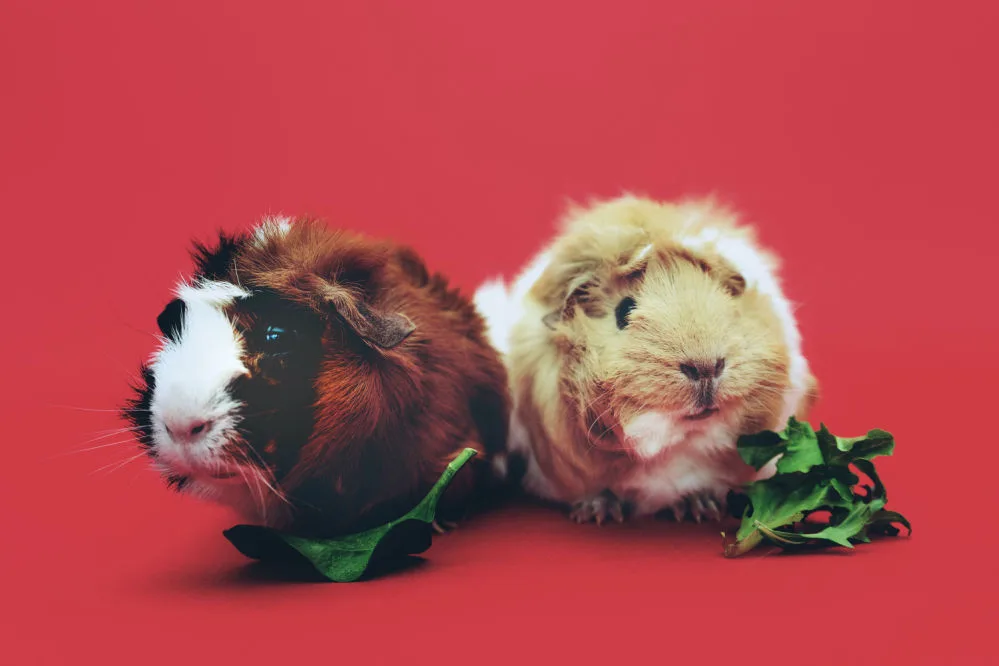
But, it is important to strike a balance between too little and too much of a good thing. A lack of vitamin C can cause paralysis and scurvy in your pet, which come with a host of health problems. However, too much Vitamin C can cause bladder problems, arthritis, and growth issues.
Calcium
Like with people, calcium is important to the health of our teeth and bones. When guinea pigs are born, they get milk from their mothers, which is a good source of calcium. Although, as they mature and their teeth and bones grow, they need to get their calcium fix from their food.
A 3.5-ounce (100g) yellow pepper has about a third of a tablespoon (10 mg) of calcium. Guinea pigs need about 0,004 ounces (130 mg) of calcium daily — especially if they’re pregnant or nursing little ones. If they get less than one teaspoon (5 mg) daily, you may notice a pet that gets spasms, tremors, dehydration, and a general loss of appetite.
What are the risks of feeding yellow bell peppers to your guinea pig?
While bell peppers have many benefits, guinea pig owners must be aware of the possible health problems yellow peppers could have on their pets.

These risks vary from pet to pet, so it’s always a good idea to keep a close eye on them and slowly introduce small amounts of these fruits into their diet to better assess the situation.
Urinary Problems
Yellow peppers are high in calcium. And while that is good, too much calcium is also the main cause of kidney stones in guinea pigs.
If they have kidney stones, they can’t get rid of the excess calcium in their system that usually exits the body through urine. A healthy cavy only needs about 0.28 oz (8 g) of calcium per 35.3 oz (one kilogram) of food.
The main things you may notice in your pet if they have kidney stones are:
- Bloody urine
- Hunched posture
- Teeth grinding
- Having trouble urinating
- Vocalizing when urinating
- Weightloss
Bad Digestion
While yellow peppers are good sources of fiber, overconsumption can have the opposite effect on a guinea pig’s sensitive digestive tract. If you find yourself wondering, “why does my guinea pig poop so much?” the problem may be due to feeding them too much bell pepper too quickly.
Besides a runny tummy, your pet can also experience stomach cramps and constipation. If you notice these symptoms persist for more than a day, you should take your pet to the vet for an evaluation. While it may be from overfeeding, there could be a host of other possible reasons.
Pesticides
For farmers, pesticides are an important part of keeping their crops alive. Often bugs and pests nibble on their produce, which could mean a significant loss of money for them. So, while not ideal, pesticides are a necessary evil sometimes.
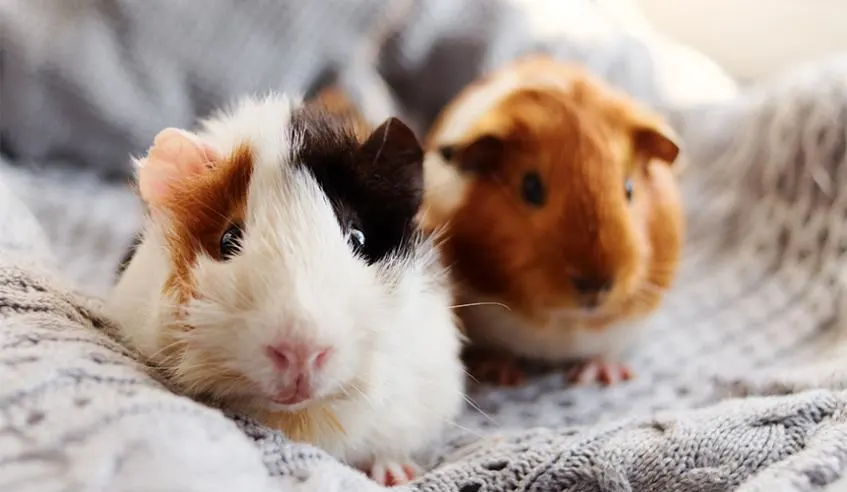
Ideally, buy organic foods from the grocery store or grow your produce at home. That way, you have a better idea of what chemicals are used on your food (if at all). Of course, not everyone has the time or money to afford to do this.
So you should always rinse your fruits and leafy vegetables before your cavy eats them, regardless of where you buy them from. If you buy them from a chain-store grocer, though, it is even more essential.
How much yellow pepper should I give my guinea pig?
Feeding your guinea pig yellow bell peppers twice a week is enough.
Cut them into small pieces so you can reduce choking hazards and control how much of it your pet nibbles on. Next to green peppers, yellow peppers contain the highest amount of vitamin C among all colored bell peppers, so it’s important not to overfeed them.
You can experiment and figure out how your pet likes them cut, but ideally, you’ll want to serve them about one-eighth of a bell pepper. You can cut this into blocks or half-inch slices to help them eat it easier.
While doing this, remember to introduce the fruit gradually to help them get used to the taste. They may be allergic or simply do not like the taste, so checking first will help you keep a better eye on matters.
Which color bell peppers can guinea pigs eat?
Find out which bell peppers are safe to eat, promote good health, and are the best tasting for your pet.
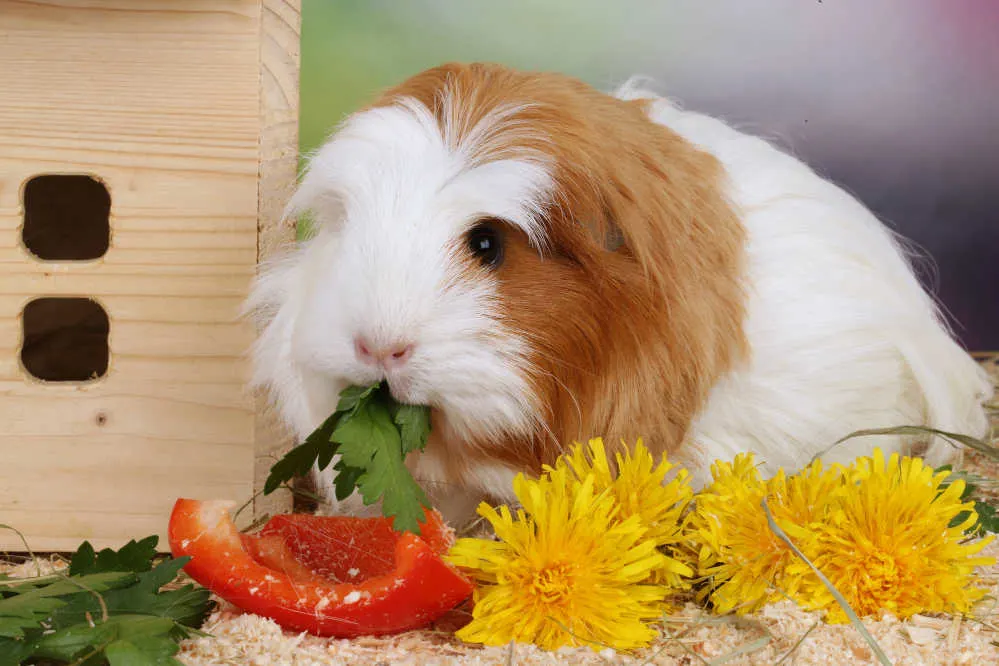
Can guinea pigs eat red bell peppers?
Yes, guinea pigs can eat red peppers, too. They can eat any color of bell peppers, really, as long as it’s not hot peppers.
These peppers are very high in vitamins A and C but have very high sugar content, so they should be enjoyed in moderation. But still, they make a wonderful snack now and then.
Can guinea pigs eat orange bell peppers?
Again that’s a “yes”. Your guinea pig can eat orange peppers. While they don’t have as much sugar as red peppers, their taste is still quite tangy and fruity.
Orange peppers are very high in vitamin C as well, but because of the high sugar content, they should only be given as an occasional treat two to three times a week.
Can guinea pigs eat green bell peppers?
That’s another “yes.”Next to yellow peppers, green peppers have the lowest sugar intake and the highest amount of vitamin C. Therefore, green peppers taste more bitter than their warm-hued cousins. Still, avoid overfeeding your pet with these fruits and only give them a few slices weekly.
Can guinea pigs eat bell pepper seeds?
Yes, they can most definitely eat the seeds without a problem. These aren’t toxic to your cavy in any way and don’t really pose a choking hazard.
However, depending on the type of bell pepper, the seed may have a higher sugar content, so don’t feed them this every day. And make sure to dispose of any uneaten seeds in the cage to avoid them going bad and your pet possibly eating them in a rotten state. Moldy food and healthy guinea pigs do not mix.
Can guinea pigs eat yellow pepper leaves?
Kale, spinach, cilantro, and parsley are all great options for these herbivores to snack on. Unfortunately, bell pepper leaves are not. These leaves contain alkaloids that can be harmful to your pet.
We as humans can cook these alkaloids down by boiling the leaves. But cooked food is not recommended for your furry little guys. Instead, rather stick to feeding your pet the nutritious fruit and its seeds now and then for a treat and keep the leaves for the compost. Stems should also stay off of your guinea pig’s menu for the same reason.
Can guinea pigs eat yellow peppers? Final thoughts
As we know, there are different types of peppers, and it is evident that none are exactly the same. These rainbow-colored fruits come with differences in nutrients, benefits, and risks for your guinea pig.
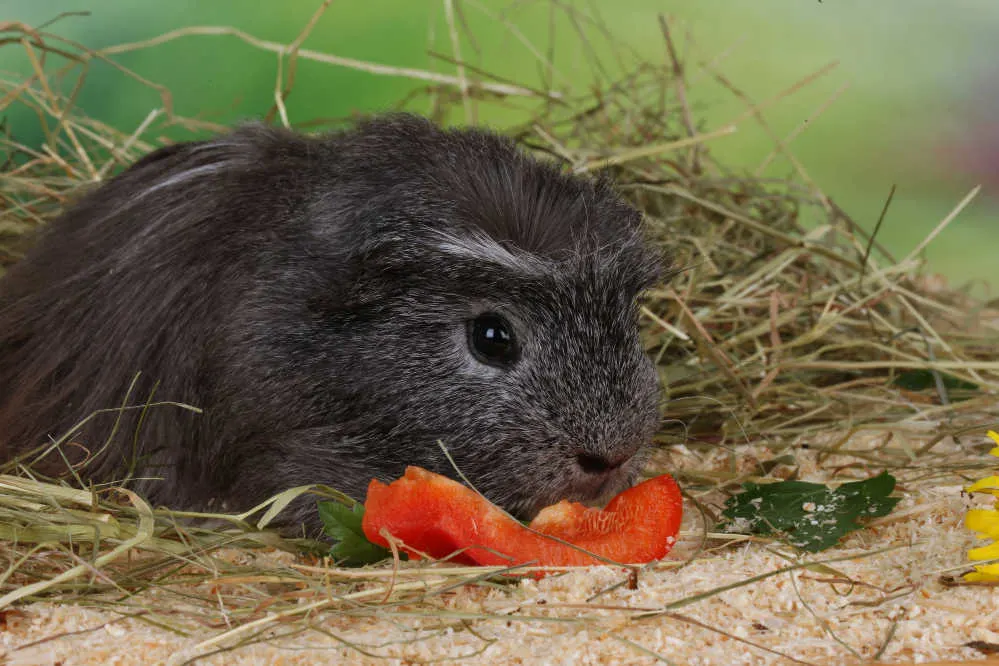
Thankfully, yellow bell peppers don’t have too many requirements to know before feeding them to your pet guinea pigs. All you need to know is to gradually incorporate this snack into their diet once or twice a week to have a happy, healthy, bright-eyed pet in your home.
Are you looking for more snack tips to brighten up your pet’s diet? Check out if guinea pigs can eat strawberries as a colorful and fruity snack.
Steph Dyson is a travel journalist by trade but a lover of all small pets. She’s been a pet mum to everything from gerbils to guinea pigs, rabbits to hamsters, and fish to dogs of all shapes and sizes. She wants to share her years of experience with small pets and make Small Pet Guides the go-to website for pet owners seeking information and care advice.

